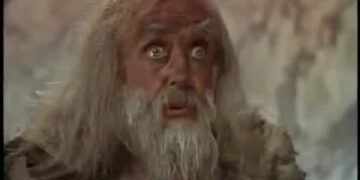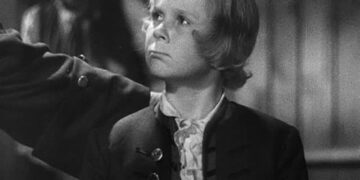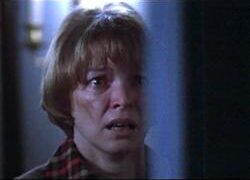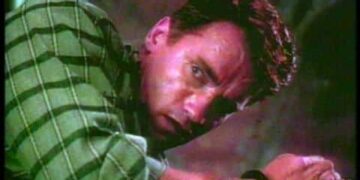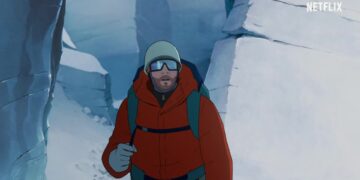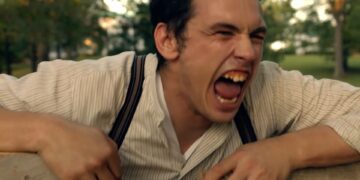Diving into the world of literature often feels like an immersive journey. Today, I’ll be your guide as we explore the depths of the novella ‘The Death of Napoleon’ by Simon Leys.
This compelling narrative reimagines historical events and offers an alternative perspective on the life of Napoleon Bonaparte, one of history’s most iconic figures. It delves into the concept of identity, destiny, and the human spirit, which I find truly captivating.
The novella was published in 1986 and quickly gained attention for its unique approach to historical fiction. It not only presents a unique narrative but also prompts readers to question the nature of history itself.
Is history merely the recording of facts, or can it be more fluid and susceptible to interpretation?
These are some of the themes that Leys delves into in this intriguing novella.
The literary world often praises ‘The Death of Napoleon’ for its imaginative plot and the author’s ability to breathe life into historical figures. The narrative is engaging, and the characters are well-rounded, making the reader feel a part of the story.
So, let’s delve deeper and explore this magnificent piece of literature.
‘The Death of Napoleon’ Book Summary
‘The Death of Napoleon’ presents an alternative history where Napoleon Bonaparte never died on the island of Saint Helena.
Instead, he escaped and lived under a pseudonym, Eugene Lenormand. The real Napoleon swaps places with a look-alike, who dies on his behalf while the emperor embarks on a journey back to France to reclaim his throne.
As Eugene Lenormand, Napoleon grapples with the mundane aspects of life and experiences the world from an entirely different perspective. The narrative is rich and compelling, capturing Napoleon’s struggles and introspection. Throughout the novella, Leys explores themes of identity, destiny, and the human spirit.
The ending of ‘The Death of Napoleon’ is poignant and thought-provoking. Napoleon, now living as Lenormand, dies unrecognized and unfulfilled.
His grand plans of reclaiming his throne never materialize, and he lives out his days as a common man.
The book concludes with the poignant line, “And that was how Napoleon Bonaparte came to die, ultimately vanquished by the invincible force of mediocrity, on an anonymous death bed, in the heart of a foreign land.”
Who’s Who in ‘The Death of Napoleon’
The primary character in the novella ‘The Death of Napoleon’ is, of course, Napoleon Bonaparte, though he goes by the name Eugene Lenormand for much of the story.
He’s depicted as a complex character, grappling with his loss of power and status, and struggling to navigate the world as a commoner.
There are several supporting characters in the novella. Among them is Ostrich, a melon merchant who becomes Napoleon’s confidant and friend.
Ostrich is a tragic figure, loyal to Napoleon to the end. He realizes Napoleon’s true identity but dies before he can reveal the truth to anyone.
Marie, a widow and the owner of the boarding house where Napoleon stays, is another significant character. She plays an important role in Napoleon’s life as Lenormand, offering him friendship and a semblance of family life he never had as an emperor.
Simon Leys: The Author of ‘The Death of Napoleon’
Simon Leys, born Pierre Ryckmans, was a renowned writer, sinologist, and literary critic.
Born in Belgium in 1935, Leys gained fame for his works on Chinese culture and his insightful commentaries on contemporary Chinese politics.
His writings are characterized by their erudition, wit, and moral clarity.
‘The Death of Napoleon’ is one of Simon Leys’ most celebrated works. The novella showcases Leys’ flair for storytelling and his ability to reimagine historical events in a compelling and thought-provoking manner.
This book exemplifies Leys’ gift for crafting vivid characters and narratives that resonate with readers long after they’ve turned the last page.
Despite his academic background and expertise in Chinese culture, Leys proved himself a master of historical fiction with ‘The Death of Napoleon’.
His portrayal of Napoleon Bonaparte is nuanced and humanizing, offering a fresh perspective on this iconic historical figure.
The success of ‘The Death of Napoleon’ solidified Leys’ reputation as a versatile and talented author.
Other Notable Works by Simon Leys
Simon Leys had an illustrious writing career that spanned various genres and topics. Some of his other notable works include ‘The Hall of Uselessness,’ a collection of essays that provides a panoramic view of his extensive knowledge and sharp intellect. It covers a wide range of subjects, from Chinese art and culture to Western literature and contemporary politics.
His book ‘The Burning Forest’ is another significant work that offers a damning critique of the Cultural Revolution in China. It’s a testament to Leys’ expertise in Chinese politics and his commitment to shedding light on the atrocities committed during this period.
Leys also wrote ‘The Chairman’s New Clothes,’ a book that takes a critical look at Mao Zedong’s regime. It’s a seminal work that challenged the prevailing Western views on Mao and his policies.
Similar Media to ‘The Death of Napoleon’
For those who enjoyed ‘The Death of Napoleon,’ there are several other books and films that explore similar themes.
‘The French Lieutenant’s Woman’ by John Fowles is one such book. Like ‘The Death of Napoleon,’ it’s a historical novel that offers a fresh perspective on familiar historical events and figures.
In terms of films, ‘Waterloo’ directed by Sergei Bondarchuk, is a historical epic that explores the final chapter of Napoleon’s career.
It presents a detailed portrayal of the Battle of Waterloo and gives viewers an insight into Napoleon’s character and military genius.
Another book worth mentioning is ‘Napoleon’s Last Island’ by Thomas Keneally. It provides a fictional account of Napoleon’s exile on Saint Helena, focusing on his relationship with a local family.
Book Club Questions for ‘The Death of Napoleon’
Discussing ‘The Death of Napoleon’ in a book club can lead to insightful conversations.
Here are a few questions to guide your discussion:
- How does Simon Leys depict Napoleon Bonaparte in the novella? In what ways does this portrayal differ from conventional depictions of Napoleon?
- How does the theme of identity play out in the novella? How does Napoleon’s identity evolve throughout the story?
- What is the significance of the ending? What message do you think Leys is trying to convey?
- How does Leys use historical facts in the novella? In what ways does he deviate from the historical record?
- How does the novella challenge the reader’s understanding of history? What does it suggest about the nature of history and our understanding of it?
Introduction to ‘The Emperor’s New Clothes’
Now, let’s shift our focus to the film adaptation of ‘The Death of Napoleon,’ titled ‘The Emperor’s New Clothes.’
Released in 2001, this British-Italian film is directed by Alan Taylor and stars Ian Holm as Napoleon/Eugene Lenormand. The film brings Simon Leys’ novella to life, offering viewers a visual exploration of the alternative history presented in the book.
‘The Emperor’s New Clothes’ captures the essence of Leys’ novella while adding its own cinematic flair. It’s a compelling watch that blends history, comedy, and drama in a unique and entertaining way.
The film not only retells the story of ‘The Death of Napoleon’ but also expands upon it, providing additional depth and context to the narrative.
Just like the novella, the film dives into themes of identity, destiny, and the human spirit. It offers a nuanced and humanizing portrayal of Napoleon Bonaparte, making it a must-watch for fans of the book and history buffs alike.
‘The Emperor’s New Clothes’ Movie Summary
‘The Emperor’s New Clothes’ begins with Napoleon Bonaparte, exiled on Saint Helena, swapping places with a commoner who looks exactly like him.
The commoner, Eugene Lenormand, stays on the island to impersonate Napoleon, while the real Napoleon, now going by the name Lenormand, sets off to Paris to reclaim his throne.
Once in Paris, Napoleon encounters various obstacles that prevent him from revealing his true identity and reclaiming his throne.
He ends up living as a commoner, experiencing life from a perspective he had never known before. He develops a relationship with a widow named Pumpkin and her daughter, which further complicates his plans.
The film’s ending deviates slightly from the novella. Instead of dying unrecognized and unfulfilled, Napoleon chooses to live out his days as Eugene Lenormand, finding happiness in his simple life with Pumpkin and her daughter.
Parent Guide for ‘The Emperor’s New Clothes’
‘The Emperor’s New Clothes’ is rated PG, meaning it’s generally suitable for all audiences.
However, parents should note that the film deals with complex themes such as identity, destiny, and the human spirit. It also contains mild violence and some language that may not be suitable for younger viewers.
The film is an excellent resource for teaching children about history and the importance of perspective.
It offers a unique portrayal of Napoleon Bonaparte, one of history’s most prominent figures, and presents an alternative view of historical events. It’s a great way to spark discussions about history, truth, and interpretation.
However, it’s important to explain to children that the film is a work of fiction and not an accurate representation of history. Parents can use it as a springboard to encourage further research and reading about Napoleon Bonaparte and the era he lived in.
When and Where ‘The Emperor’s New Clothes’ Takes Place
‘The Emperor’s New Clothes’ is set in the early 19th century, shortly after Napoleon Bonaparte’s exile to Saint Helena.
The film begins on the island of Saint Helena, located in the South Atlantic Ocean. It then moves to Paris, France, where the bulk of the story unfolds.
The film captures the essence of the era, from the costumes and set designs to the societal norms and political climate.
The setting plays a crucial role in the narrative, shaping the characters and their actions. It offers viewers a glimpse into a pivotal period in history, adding depth and context to the story.
Film Locations of ‘The Emperor’s New Clothes’
‘The Emperor’s New Clothes’ was filmed in several locations to authentically capture the story’s setting.
Portions of the film were shot in Italy, including Rome and the island of Elba, which doubled as Saint Helena. These locations provided the rugged and isolated backdrop for Napoleon’s exile.
The scenes set in Paris were filmed in and around Turin, Italy. The city’s architecture and ambiance helped recreate the early 19th-century Parisian setting.
The filmmakers paid great attention to detail to ensure the film’s setting was as authentic as possible, adding to the overall viewing experience.
Who’s Who in ‘The Emperor’s New Clothes’
Ian Holm delivers a remarkable performance as Napoleon Bonaparte/Eugene Lenormand in ‘The Emperor’s New Clothes.’
His portrayal of Napoleon is nuanced and multi-dimensional, capturing the complexities of the character.
Iben Hjejle stars as Pumpkin, the widow who befriends and eventually falls in love with Napoleon. Her performance adds depth to the character and brings a touch of romance to the narrative.
Tim McInnerny plays Dr. Lambert, a Napoleon fanatic who becomes a crucial character in the plot. His performance adds a layer of comedy to the film, providing some lighter moments amidst the drama.
The Soundtrack of ‘The Emperor’s New Clothes’ by Rachel Portman
The soundtrack of ‘The Emperor’s New Clothes’ is composed by Rachel Portman, a renowned British composer known for her contributions to film and television.
Her compositions for the film are both evocative and captivating, enhancing the narrative and helping set the mood.
The soundtrack complements the film’s narrative, adding depth and emotion to the scenes. It captures the essence of the era and the characters, making the viewing experience more immersive.
From the uplifting themes that accompany Napoleon’s hopeful moments to the somber melodies that underscore his struggles, the soundtrack plays a crucial role in the film.
Curiosities About ‘The Emperor’s New Clothes’
‘The Emperor’s New Clothes’ is filled with interesting tidbits and curiosities that add to the film’s allure.
One notable fact is that Ian Holm, who plays Napoleon, also portrayed Napoleon in a 1974 film titled ‘Napoleon and Love.’ This makes him one of the few actors who have played the same historical character in different films.
Another curiosity is that the film’s title, ‘The Emperor’s New Clothes,’ is a reference to a famous fairy tale by Hans Christian Andersen.
The fairy tale tells the story of an emperor who is tricked into believing he is wearing a suit of invisible clothes. This mirrors Napoleon’s situation in the film, where he is unrecognized and living under a false identity.
Tips for Cosplay: Dress Like the Characters of ‘The Emperor’s New Clothes’
For cosplay enthusiasts, ‘The Emperor’s New Clothes’ offers a wealth of inspiration.
Dressing as Napoleon Bonaparte would involve a military uniform complete with a bicorne hat, an iconic part of Napoleon’s attire.
For the look of Eugene Lenormand, a simple 19th-century civilian outfit would suffice.
If you want to cosplay as Pumpkin, opt for a typical early 19th-century French woman’s attire.
This would include a long dress, a bonnet, and a shawl.
For Dr. Lambert, a period-appropriate suit and a pair of spectacles would be fitting.
Remember, cosplay is all about creativity and fun. So feel free to add your own twist to the characters’ outfits.
Other Media by Alan Taylor
Alan Taylor, the director of ‘The Emperor’s New Clothes,’ is known for his work in both film and television. Some of his other notable works include ‘Thor: The Dark World’ and ‘Terminator Genisys.’
He has also directed episodes of popular TV shows such as ‘Game of Thrones,’ ‘Mad Men,’ and ‘The Sopranos.’
Taylor’s ability to handle different genres and his knack for storytelling are evident in his diverse body of work.
Whether it’s a historical drama like ‘The Emperor’s New Clothes,’ a superhero film like ‘Thor: The Dark World,’ or a gritty TV series like ‘The Sopranos,’ Taylor’s direction always adds a unique touch to the narrative.
Similar Media to ‘The Emperor’s New Clothes’
If you enjoyed ‘The Emperor’s New Clothes,’ there are several other films and TV shows that you might like. ‘Master and Commander: The Far Side of the World’ is a historical film set during the Napoleonic Wars, offering a detailed portrayal of life at sea during this period.
For fans of historical dramas with a touch of romance, ‘Pride and Prejudice’ is a must-watch. This adaptation of Jane Austen’s novel captures the essence of the Regency era and features a compelling love story.
On the TV front, ‘Horatio Hornblower’ is a series that explores the naval warfare during the Napoleonic era. It offers a blend of action, drama, and historical detail that makes for an engaging watch.
Video Games and Spin-Offs Related to ‘The Emperor’s New Clothes’
While there are no direct video games or spin-offs related to ‘The Emperor’s New Clothes,’ there are several games that explore the Napoleonic era. ‘Napoleon: Total War’ is a strategy game that lets players take on the role of Napoleon Bonaparte and engage in some of his most famous battles.
For those interested in alternate history, ‘Assassin’s Creed Unity’ presents a fictionalized version of the French Revolution, which occurred during the Napoleonic era.
Travel Guide to Visit ‘The Emperor’s New Clothes’ Locations
For those inspired to visit the locations featured in ‘The Emperor’s New Clothes,’ a trip to Italy would be in order.
Rome, with its rich history and cultural landmarks, is always worth a visit. The island of Elba, where some of the film’s scenes were shot, is known for its beautiful beaches and historic sites.
A visit to Turin, where the Paris scenes were filmed, would also be rewarding. The city is known for its baroque architecture and its vibrant cultural scene. It’s also home to several museums and historic sites that are worth exploring.
In-Depth Analysis: Comparing ‘The Death of Napoleon’ and ‘The Emperor’s New Clothes’
Comparing ‘The Death of Napoleon’ and its film adaptation, ‘The Emperor’s New Clothes,’ reveals both similarities and differences.
Both the novella and the film present an alternative history of Napoleon Bonaparte’s life, exploring themes of identity, destiny, and the human spirit.
However, there are some key differences. The film adds a touch of romance and comedy to the narrative, which is largely absent in the novella.
Moreover, the ending of the film deviates from the novella, offering a more hopeful conclusion to Napoleon’s story.
Despite these differences, both the novella and the film succeed in presenting a compelling and humanizing portrayal of Napoleon Bonaparte.
They challenge the viewer’s understanding of history and identity, making them thought-provoking works of art.
Explaining the Ending: ‘The Death of Napoleon’ and ‘The Emperor’s New Clothes’
As we dive deeper into our book summary and analysis, it becomes crucial to understand the endings of both masterpieces.
In ‘The Death of Napoleon,’ Napoleon, living under the alias of Eugene Lenormand, decides to stay in Paris as a melon vendor, giving up his ambition to regain his lost empire.
This ending portrays a poignant transformation in Napoleon’s character, showcasing his acceptance of an ordinary life.
On the contrary, ‘The Emperor’s New Clothes’ chooses a different route. Napoleon’s identity is revealed, and he escapes with Pumpkin to start a new life.
This ending, while deviating from the original, still manages to encapsulate Napoleon’s transformation and acceptance of a simple life.
The nuances in both endings offer fertile ground for discussion. As we unravel these threads, we can’t help but ponder the potential for a sequel, remake, or spin-off.
Could we see Napoleon and Pumpkin’s life in the aftermath of the movie? Or perhaps a series exploring Napoleon’s earlier life, based on other works by Simon Leys?
The Potential for a Remake, Sequel, or Spin-off
Given the richness and depth of the original narrative and its cinematic adaptation, the prospect of a remake, sequel, or spin-off is indeed tantalizing.
A sequel could explore Napoleon’s life after the end of ‘The Emperor’s New Clothes.’ How does he navigate his new life with Pumpkin? How does he adjust to the ordinary life he once deemed beneath him?
A spin-off could delve into the lives of other prominent figures during Napoleon’s era or even explore the life of Napoleon before his exile, based on other works by Simon Leys.
A remake could perhaps adhere more closely to the original book, providing a fresh perspective on the narrative.
In terms of casting, there are numerous actors who could bring Napoleon’s character to life once again, such as Tom Hardy or Michael Fassbender. The film could feature picturesque film locations, perhaps even the actual locations where the historical events unfolded.
Conclusion
In conclusion, both ‘The Death of Napoleon’ and ‘The Emperor’s New Clothes’ offer a captivating perspective on one of history’s most intriguing figures.
They provide an alternative narrative that piques our curiosity and stimulates our imagination. Whether you’re a history buff, a film enthusiast, or someone who enjoys thought-provoking narratives, these works are sure to captivate and inspire.
As we conclude our journey, we can’t help but anticipate the potential for a remake, sequel, or spin-off.
As we close this chapter, we encourage you to explore these narratives further, perhaps even dress like the characters for a cosplay event or visit the film locations.
Delve into the soundtrack by Rachel Portman, explore the quotes that moved you, and unlock the curiosities that these narratives offer.
Remember, every story is a new journey, and every journey offers a new perspective. So, keep exploring, keep questioning, and most importantly, keep reading!
Thank you for embarking on this journey with us. Stay tuned for more exciting discussions and in-depth analysis on your favorite books and movies.
Until then, happy reading and happy viewing!


